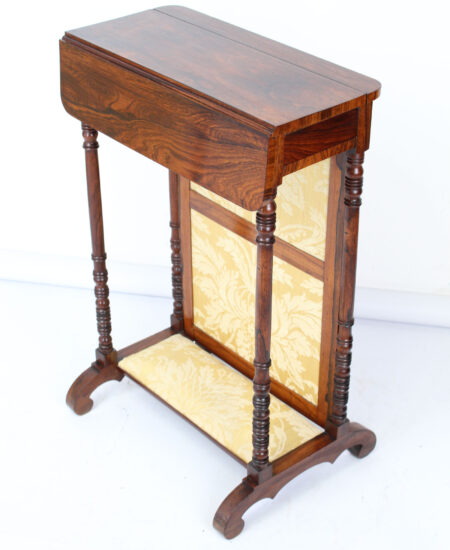-
Antique Victorian Rosewood Davenport Desk
£395.00 Add to cart -
Small Victorian Rosewood Side Table / Prie Dieu Table
£350.00 Add to cart
Rosewood is so named because it exudes a sweet strong smell when cut which persists over the years. It is dense and heavy and takes polish well resulting in a deep and glossy patina over years of care.
There are two main sources of rosewood, Brazil and India. Brazilian rosewood can vary in colour from a chocolate brown to a lighter purplish or reddish brown with darker contrasting streaks, while Indian rosewood can vary from red to light brown with golden streaks. Mostly however it comes in various shades of purplish brown, oxidising over the years to a rich brown colour typical of antique rosewood furniture. Rosewood is a more costly wood than either walnut of mahogany. It carves well and therefore it has been used for more elaborate expensive items. Rosewood salon and dining chairs, which can occasionally be found, are usually of a high quality, with carved and pierced rails and splats and carved cabriole legs. Larger items such as sideboards, are most often veneered, as it would have been too costly to make them out of solid wood. Rosewood was a popular choice for boxes such as sewing and jewellery boxes and for stationery boxes. Rosewood is less susceptible to worm than either walnut of mahogany and is hard so tends to absorb knocks quite well.
If you are lucky enough to own or acquire a piece of antique rosewood furniture you should keep it out of direct sunlight, avoid ranges of temperature and heat sources such as radiators, never use aerosols or damp clothes but feed the wood with beeswax every 6 months. This way you will preserve and improve your antique investment.


